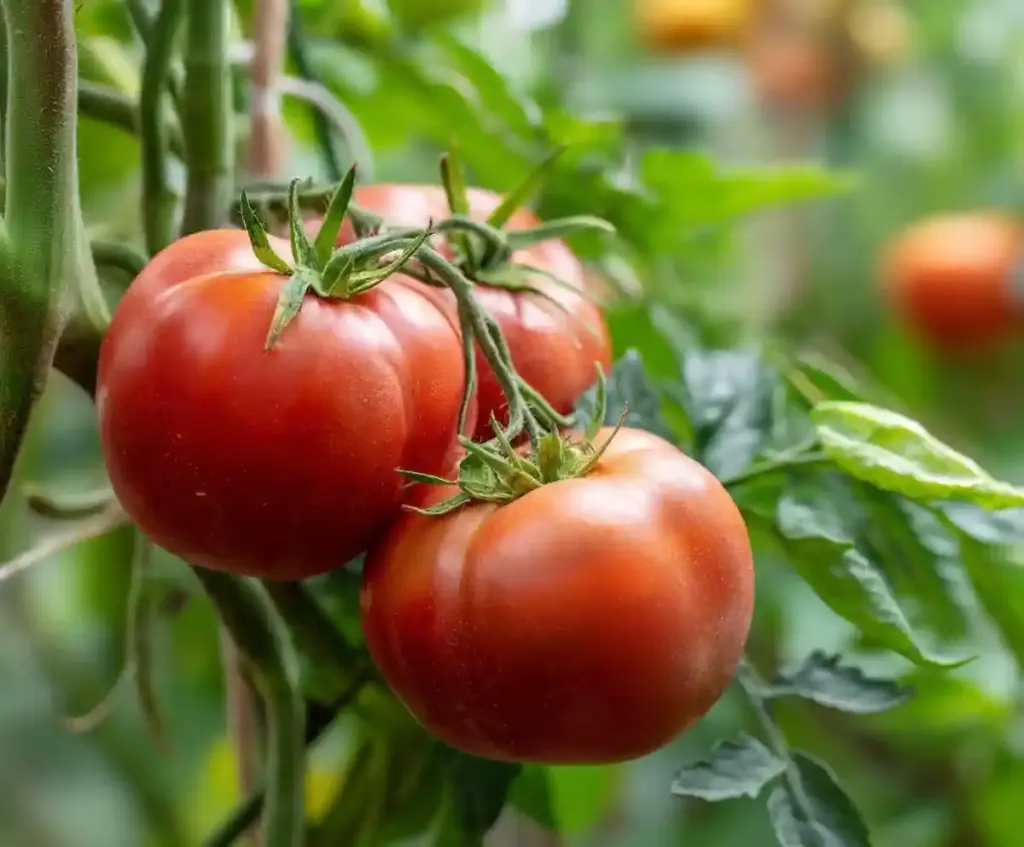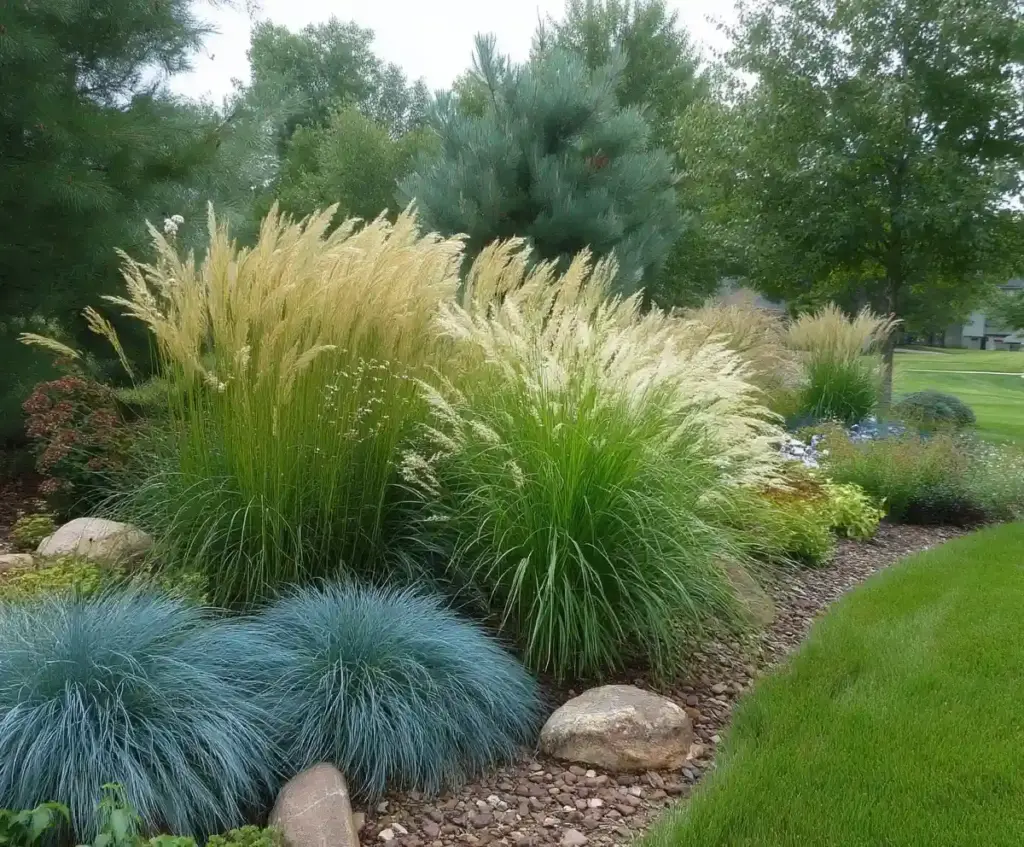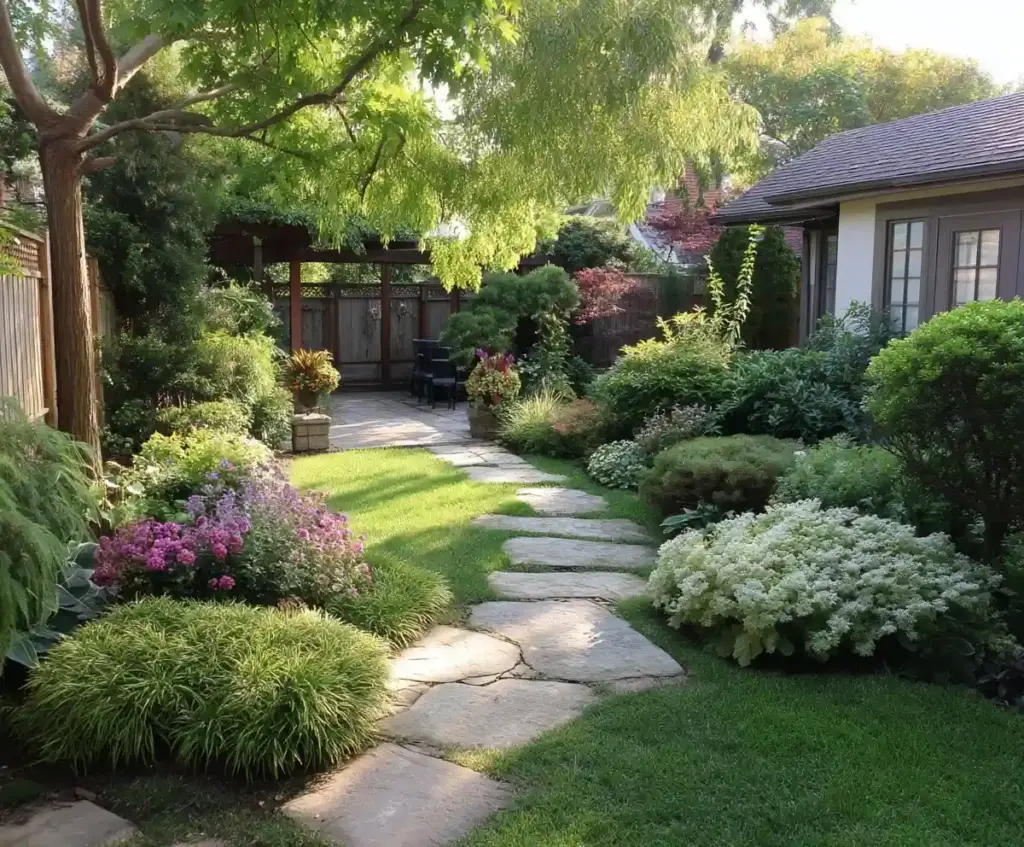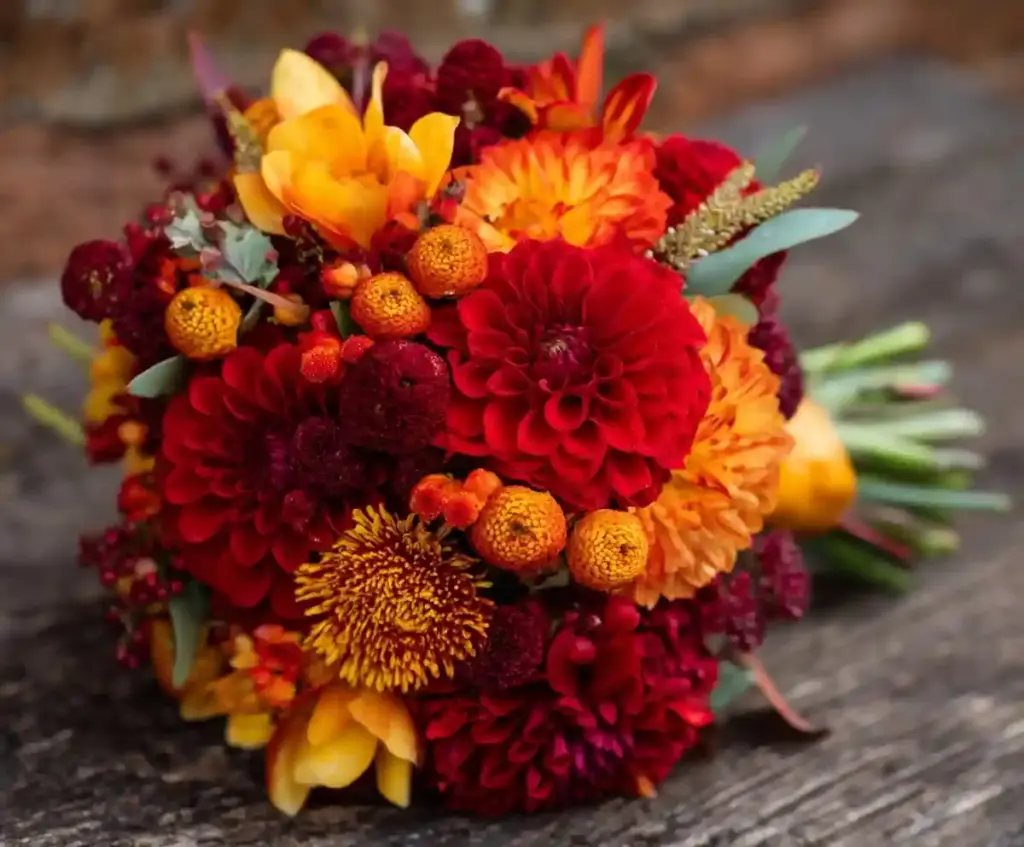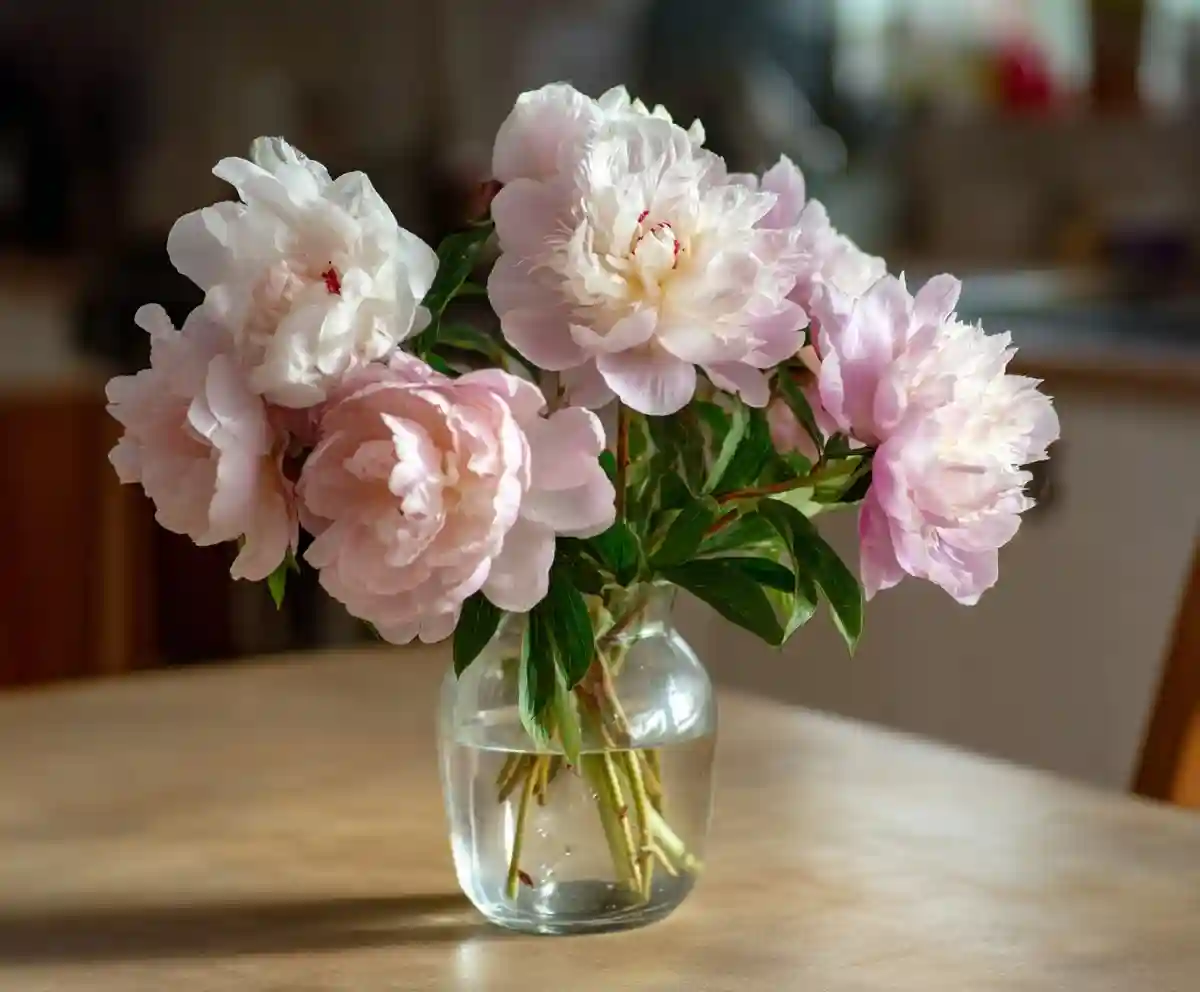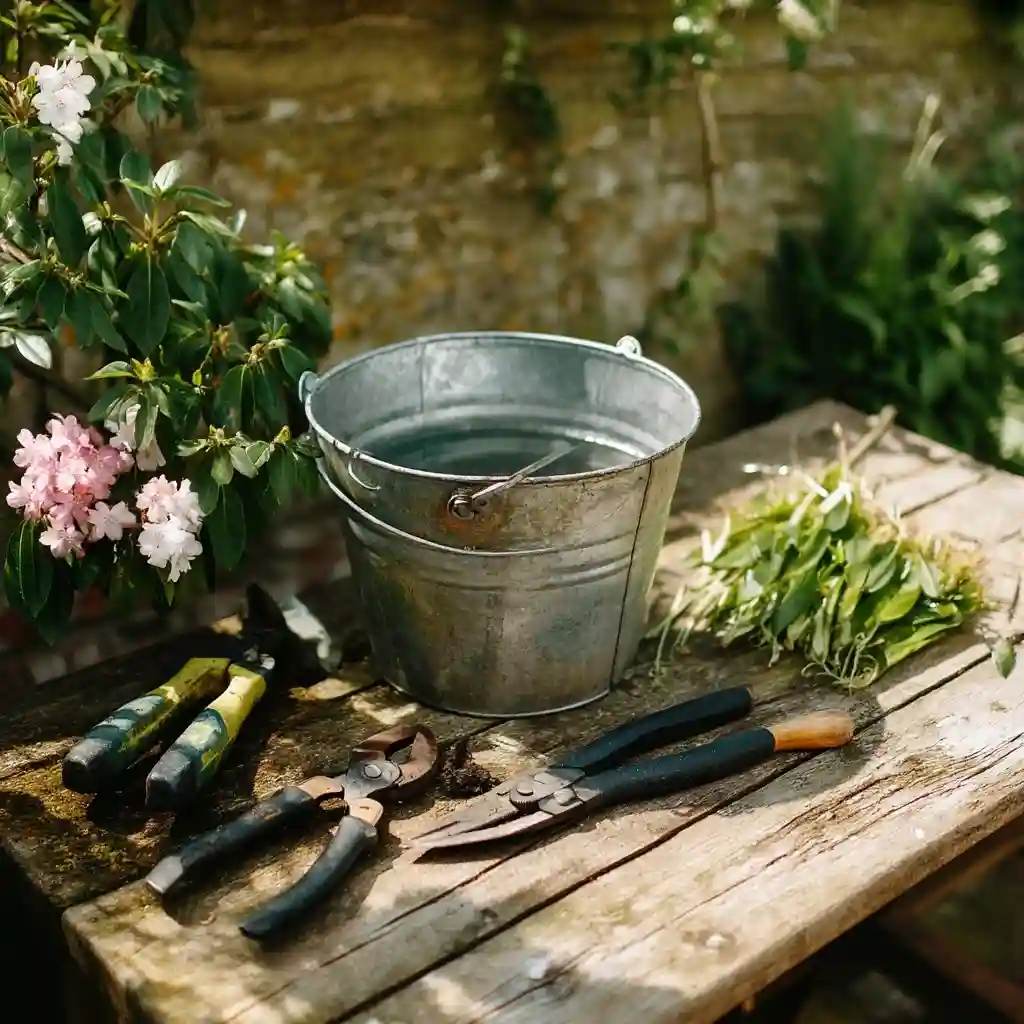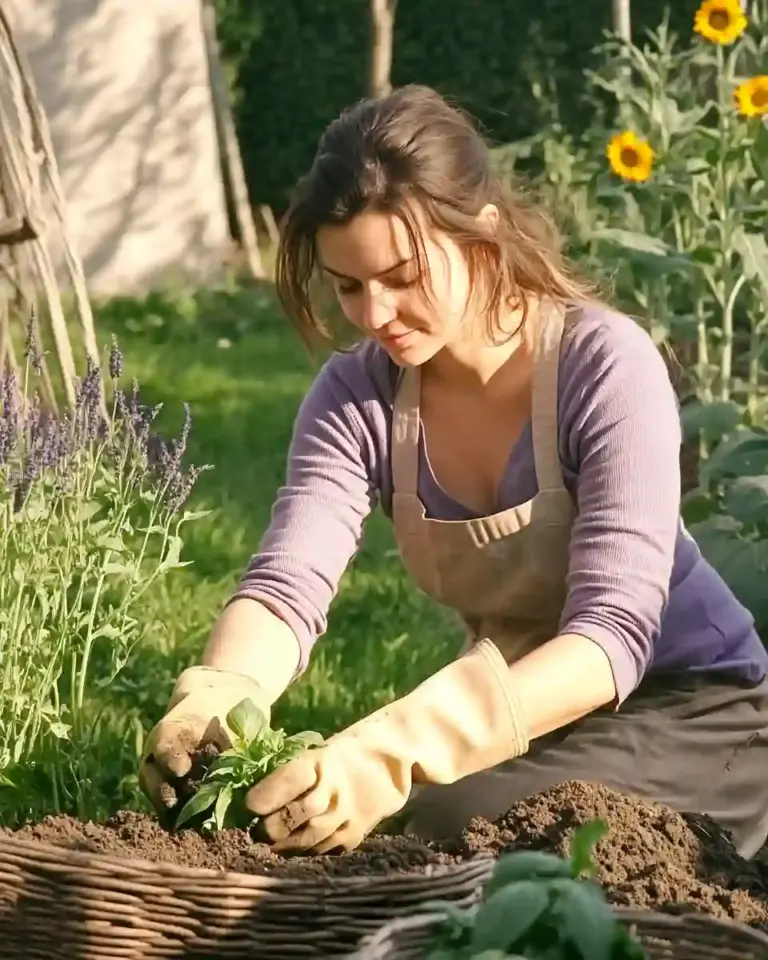If you’ve waited all year for your blooms, knowing how to harvest peonies at the right time can mean the difference between a week of flowers—or an entire summer of beauty. Timing is everything when it comes to preserving their vase life. Whether you’re arranging them for your table or storing them for later, cutting at the right stage ensures your peonies don’t wilt before they even open.
The best time to harvest is during the cool parts of the day—early morning or late evening. Not only does this protect delicate petals from heat stress, but it also keeps the stems firm and full of moisture. But the real secret? It’s all in the bud…
Table of Contents
Tools & Prep for Harvesting Peonies
Before you head out to harvest peonies, having the right tools and a simple setup can make a big difference in how long your blooms last. Cleanliness and preparation are key to preventing bacteria from shortening the life of your cut stems.
What You’ll Need:
- Sharp, clean pruners or garden shears
Dirty blades can introduce bacteria into the stems and reduce vase life. - Buckets of cool, clean water
Cut stems should go straight into water to stay hydrated from the start. - A cool, shaded workspace
Avoid leaving peonies in the sun while arranging them. A shaded spot helps prevent wilting. - Clean hands or gloves
Oils or dirt from your hands can affect the stem ends and water clarity.
A little planning now goes a long way. Once your setup is ready, it’s time to wait for the perfect cutting moment—the marshmallow stage.
The Perfect Harvest Stage: The “Marshmallow” Bud
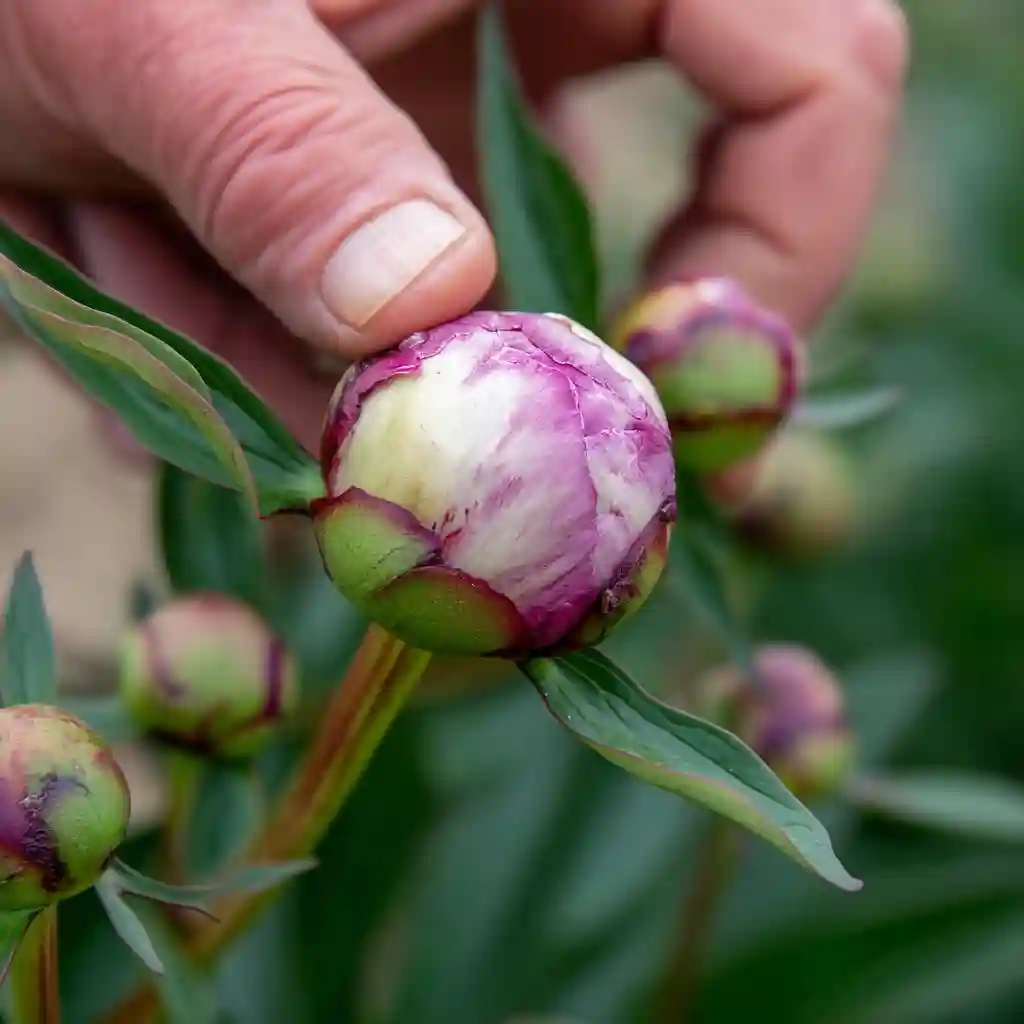
When it comes to the best time to harvest peonies, the most critical detail is catching them at the right bud stage. Peony buds go through a few phases, but the ideal moment is known among gardeners as the “marshmallow stage.”
At first, buds are small and firm—almost rock-hard. As they mature, they begin to soften. You’ll know it’s time to cut when the bud feels slightly squishy, just like a marshmallow. Not too firm, not yet open—just a soft bounce when gently pressed.
Why this stage? Because peonies harvested during the marshmallow phase are fully developed internally but haven’t yet bloomed. This gives you the longest possible vase life while also allowing flexibility in storage or display.
Check your plants twice daily during bloom season—these buds can mature quickly, sometimes overnight.
How to Cut Peonies
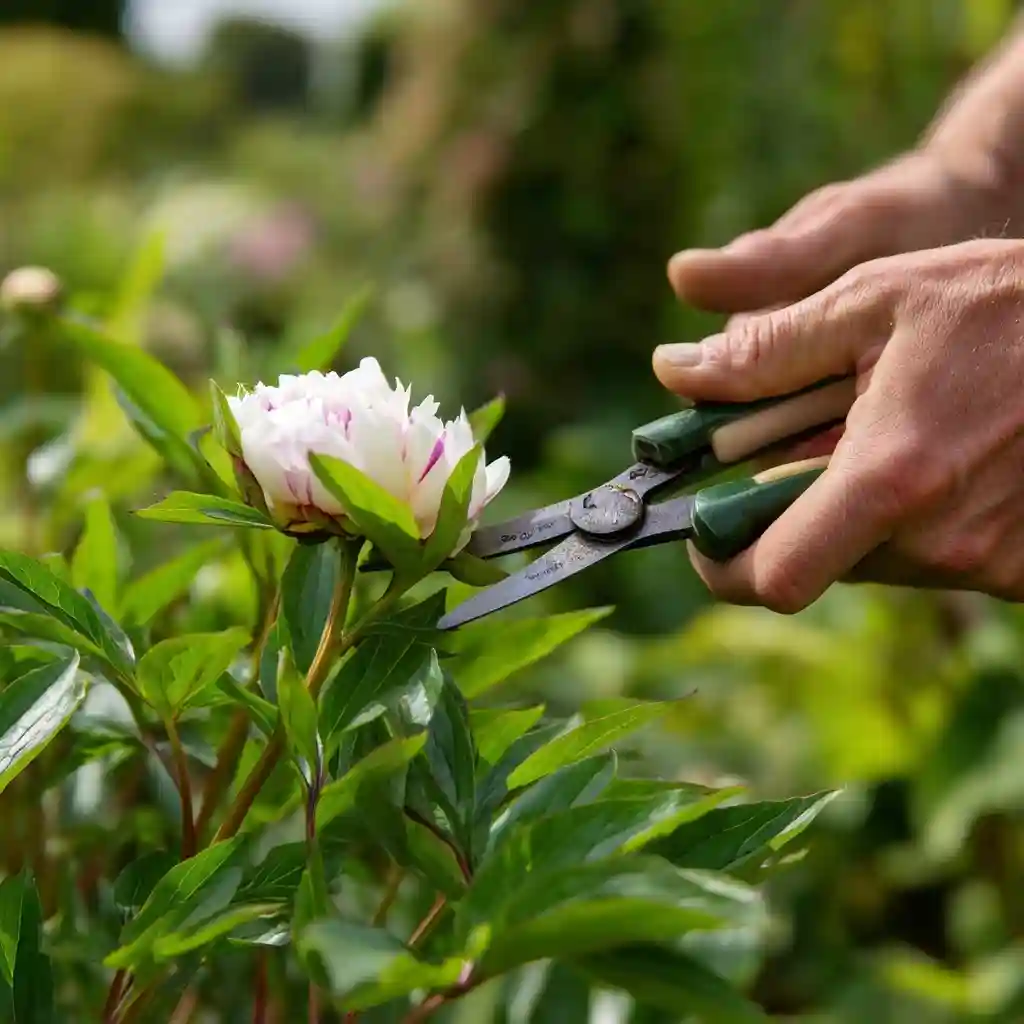
Once your peony buds reach the marshmallow stage, it’s time to cut with care. The way you cut directly affects how long your blooms will last and how healthy your plant remains for next year’s growth.
Here’s how to harvest peonies properly:
- Use clean, sharp pruners to prevent crushing the stems.
- Cut stems on a diagonal. This increases the surface area for water uptake and prevents the base from sitting flat at the bottom of the vase, where it could rot.
- Cut the longest stems possible, especially if you plan to store or arrange them. Leave at least 1–3 sets of leaves on each stem you take. This ensures the plant can still photosynthesize and store energy for next year’s blooms.
- Always avoid cutting more than one-third of the plant at once. Overharvesting can weaken the plant for the next season.
Handle each stem gently after cutting—peony petals bruise easily, even in bud form.
Strip Lower Foliage & Recut Stems in Clean Water
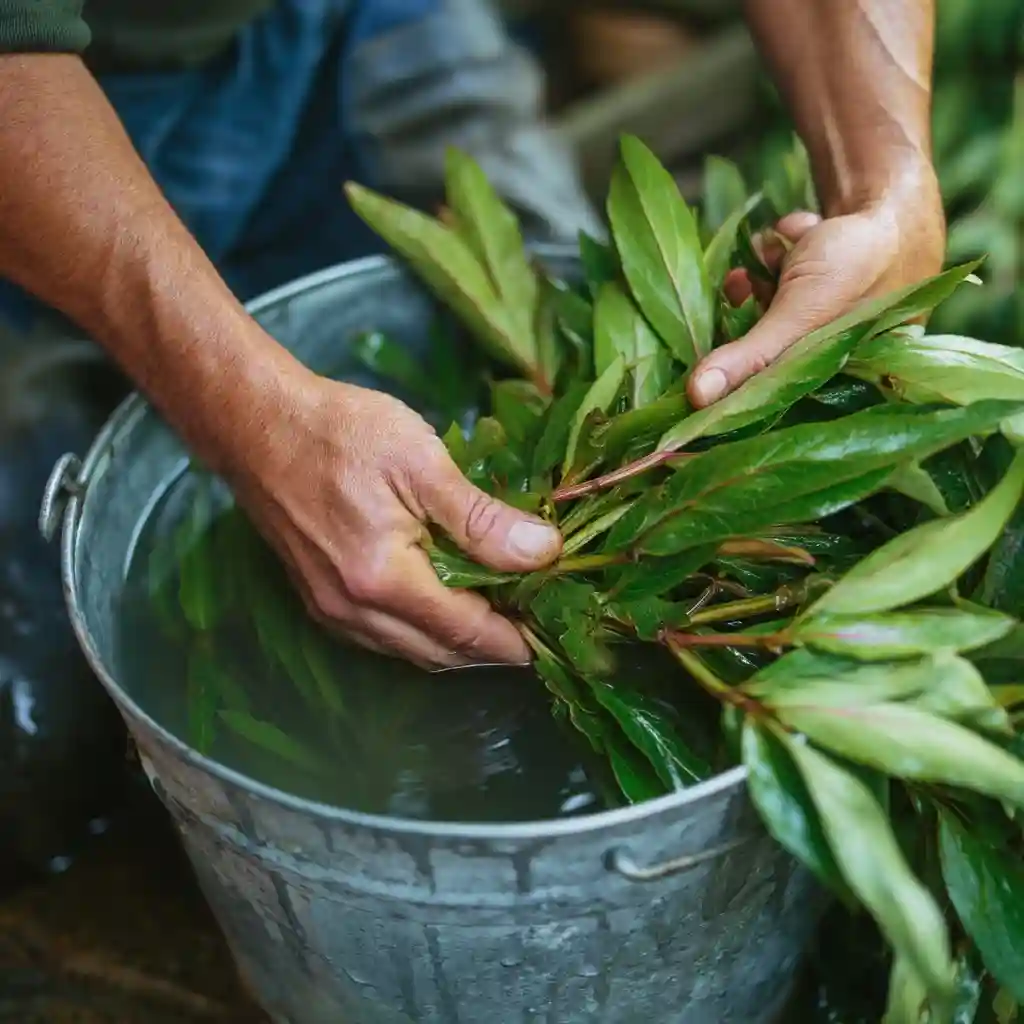
After you harvest peonies, a few simple steps can dramatically extend their vase life. These post-cut practices are just as important as timing the harvest itself.
Step 1: Strip the Lower Leaves
Remove all foliage that would sit below the waterline in your vase or bucket. Leaves submerged in water break down quickly, encouraging bacteria growth that clogs stems and shortens bloom life.
You can do this gently by hand or use a floral stripper for faster results. Leave any decorative buds near the top of the stem if you’d like—these often add charm to arrangements even if they don’t fully bloom.
Step 2: Recut the Stems at an Angle
Right before placing the stems in water, recut the base at a sharp diagonal. Even if you cut them this way in the garden, stems can seal over quickly in warm air. A fresh cut opens them up again, improving hydration from the very start.
Place them immediately into clean, cool water while you prep for the next steps.
Conditioning Freshly Cut Peonies

Once you’ve taken the time to harvest peonies correctly, conditioning them is the next essential step to prolong their beauty. Think of this phase as giving your flowers a restful pause before they start blooming indoors.
What Does Conditioning Mean?
Conditioning allows cut peonies to hydrate deeply and prepare for a longer vase life.
How to Condition Peonies:
- Place stems in a bucket of fresh, cool water immediately after cutting and stripping leaves.
- Keep them in a cool, dark space—ideally a basement, garage, or air-conditioned room—away from sunlight and drafts.
- Add a floral preservative to the water, if available. This slows bacterial growth and provides nutrients to the blooms.
- Let the stems hydrate for at least 6–12 hours before arranging them.
This pause allows the peonies to absorb maximum moisture before fully opening. In many cases, buds will begin to swell and show hints of color during this stage—but that’s perfectly normal.
Storing Peonies to Last All Summer
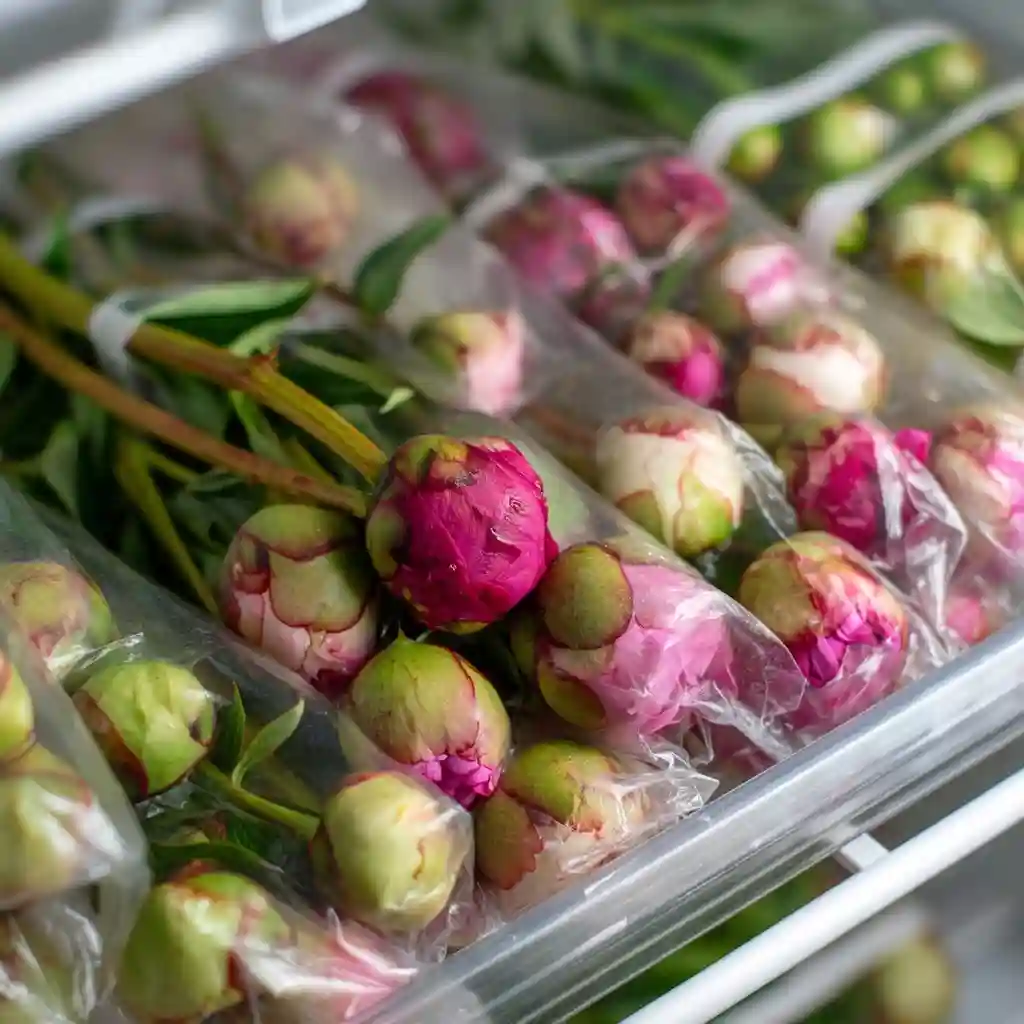
Yes, it’s true—you can harvest peonies in spring and still enjoy their blooms weeks (even months) later. The trick is proper storage, and it starts with the right bud stage and a bit of refrigerator space.
How to Store Peonies for Long-Term Enjoyment:
- Only store peonies harvested in the marshmallow bud stage—fully formed but not yet open.
- After conditioning, gently dry the stems and buds with a clean towel.
- Wrap each stem or small bundle in plastic wrap or place them in gallon-sized zip-top bags. Make sure the buds are fully enclosed but not crushed.
- Use rubber bands or twine to seal the bags and retain moisture.
- Lay the wrapped peonies horizontally in the refrigerator—not upright. Avoid placing them near fruits like apples or bananas, which release ethylene gas that shortens flower life.
- Stored this way, peonies can last for several weeks to two months.
Whenever you’re ready for fresh blooms, just unwrap, hydrate, and watch them come to life.
How to Wake and Open Stored Peony Buds
Bringing stored peonies back to life is surprisingly simple. When done correctly, they’ll bloom just as beautifully as if they were freshly cut. The key is to wake them up slowly and gently.
Here’s how to revive them:
- Remove the wrapping carefully to avoid bruising the buds.
- Give each stem a fresh diagonal cut under clean, cool water.
- Place them in a vase with room-temperature water—not cold, not hot.
- Set the vase in a bright, well-lit room out of direct sunlight. Light helps trigger blooming, but too much heat can cause petals to wilt.
- Change the water daily and ensure the stems stay upright and hydrated.
Peonies typically take 1 to 2 days to fully open after storage. If they appear slow to bloom, be patient—gentle warmth and clean water usually do the trick.
Everyday Vase-Life Tips
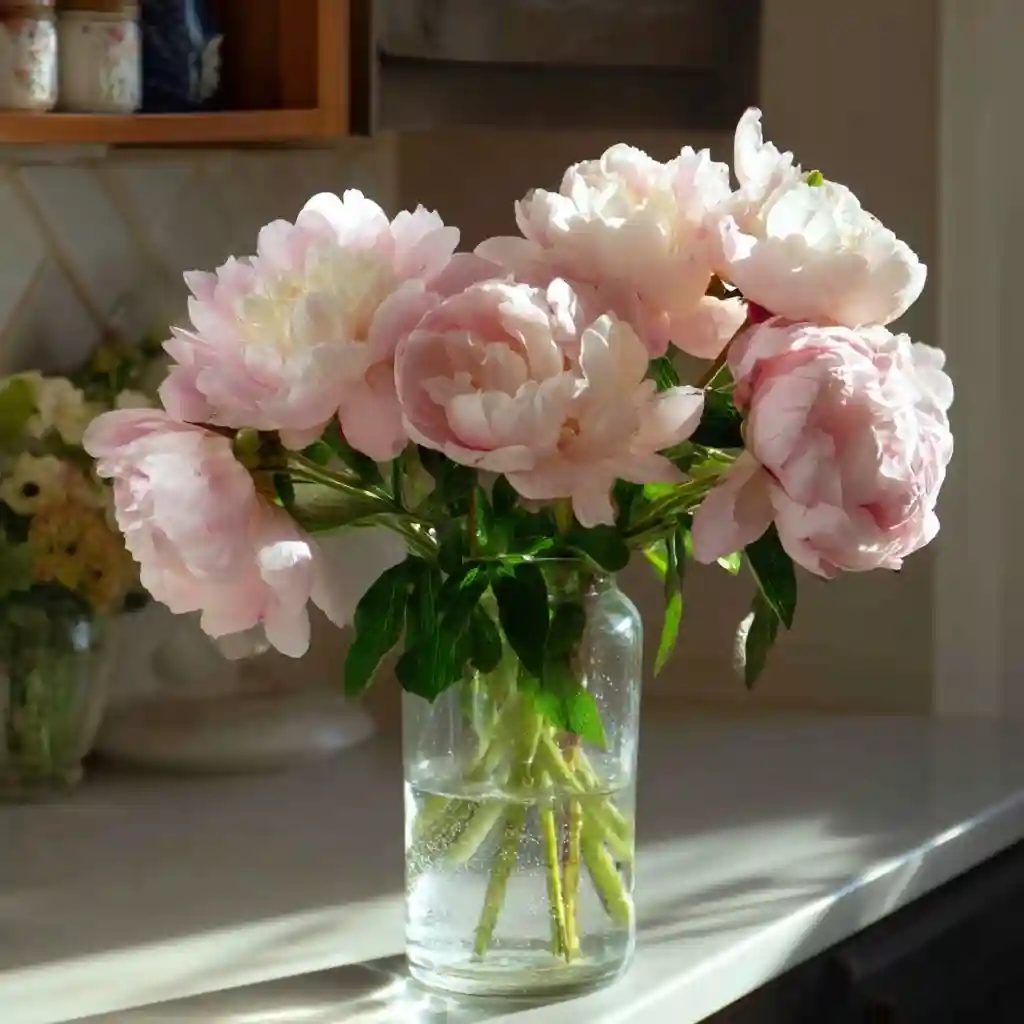
Even after you harvest peonies and revive them beautifully, keeping them fresh in a vase takes a little daily attention. These small habits can stretch their bloom life from a few days to over a week.
Keep Your Peonies Looking Their Best:
- Place vases in a cool spot, away from direct sunlight, heat vents, or electronics.
- Change the water every 1–2 days to prevent bacteria build-up.
- Re-trim the stems slightly at an angle each time you refresh the water. This keeps water uptake efficient.
- Remove any wilting petals or fallen leaves to keep the arrangement clean.
- If using floral preservative, replenish it with each water change for best results.
Remember, peonies are sensitive to warmth—too much heat will cause petals to fall faster. Treat them gently, and they’ll reward you with stunning, full blooms.
Troubleshooting & FAQs
Even if you carefully harvest peonies, you might run into a few common issues. Here’s how to handle them without losing your blooms—or your patience.
Why are there ants on my peonies?
Ants are naturally attracted to the sugary sap on peony buds. They don’t harm the plant and may even help open the blooms. To remove them:
- Dip buds in water before bringing them indoors.
- Gently shake or brush them off outdoors.
Why do my peonies droop?
Drooping usually means the stem isn’t getting enough water. Try:
- Recutting the stem at a steep angle.
- Using a taller vase for better support.
- Adding floral wire inside the stem if needed.
What if my peonies don’t open after storage?
It could be a temperature issue or a sign they were harvested too early or late. To encourage blooming:
- Place them in a bright room (not direct sun).
- Ensure the water is room temperature, and the stems are freshly cut.
Do all varieties store and bloom the same?
Not quite. Early-blooming varieties tend to store better than very late or highly frilly cultivars. If you’re experimenting with storage, harvest peonies from different varieties to compare performance.
Final Thoughts
When you harvest peonies at just the right time and give them a little care, you can enjoy their soft, ruffled beauty long after the garden fades. Whether you’re cutting a handful for today’s table or storing buds for summer events, following these simple steps ensures each bloom reaches its full potential.
With a sharp pair of pruners, a cool workspace, and attention to timing, your peonies can go from fleeting to long-lasting—bringing joy all season long.
🌿 Love gardening inspiration? Follow me on Pinterest for bold plant ideas, tips, and seasonal color!
More Posts
